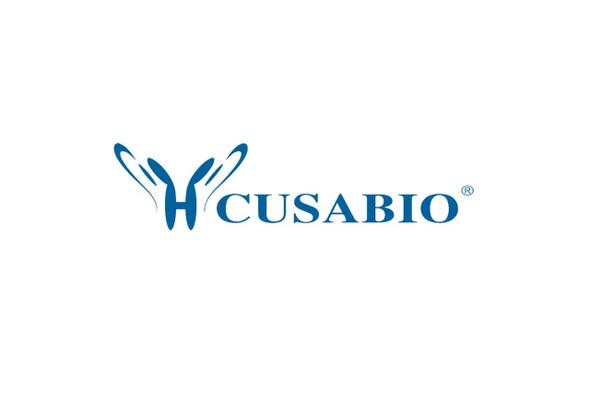Cusabio Active Proteins
Recombinant Human Beta-nerve growth factor (NGF) (Active) | CSB-AP003771HU
- SKU:
- CSB-AP003771HU
- Availability:
- 5 to 10 Working Days
Description
Recombinant Human Beta-nerve growth factor (NGF) (Active) | CSB-AP003771HU | Cusabio
Protein Description: Full Length of Mature Protein
Alternative Name (s) : Beta-Nerve Growth Factor; Beta-NGF; NGF; NGFB
Gene Names: NGF
Research Areas: Neuroscience
Species: Homo sapiens (Human)
Source: E.coli
Tag Info: Tag-Free
Expression Region: 122-241aa
Sequence Info: SSSHPIFHRGEFSVCDSVSVWVGDKTTATDIKGKEVMVLGEVNINNSVFKQYFFETKCRDPNPVDSGCRGIDSKHWNSYCTTTHTFVKALTMDGKQAAWRFIRIDTACVCVLSRKAVRRA
Biological Activity: The ED50 as determined in a cell proliferation assay using TF‑1 human erythroleukemic cells is less than 2 ng/ml.
MW: 13.4 kDa
Purity: Greater than 95% as determined by SDS-PAGE.
Endotoxin: Less than 1.0 EU/µg as determined by LAL method.
Relevance: Human β-Nerve Growth Factor (β-NGF) was initially isolated in the mouse submandibular gland. It is composed of three non-covalently linked subunits α, β, and γ; it exhibits all the biological activities ascribed to NGF. It is structurally related to BDNF, NT-3 and NT-4 and belongs to the cysteine-knot family of growth factors that assume stable dimeric structures. Β-NGF is a neurotrophic factor that signals through its receptor β-NGF, and plays a crucial role in the development and preservation of the sensory and sympathetic nervous systems. Β-NGF also acts as a growth and differentiation factor for B lymphocytes and enhances B-cell survival. These results suggest that β-NGF is a pleiotropic cytokine, which in addition to its neurotropic activities may have an important role in the regulation of the immune system. Human β-NGF shares 90% sequence similarity with mouse protein and shows cross-species reactivity.
PubMed ID:
Notes: Repeated freezing and thawing is not recommended. Store working aliquots at 4℃ for up to one week.
Function: Nerve growth factor is important for the development and maintenance of the sympathetic and sensory nervous systems. Extracellular ligand for the NTRK1 and NGFR receptors, activates cellular signaling cascades through those receptor tyrosine kinase to regulate neuronal proliferation, differentiation and survival. Inhibits metalloproteinase dependent proteolysis of platelet glycoprotein VI
Involvement in disease: Neuropathy, hereditary sensory and autonomic, 5 (HSAN5)
Subcellular Location: Secreted
Protein Families: NGF-beta family
Tissue Specificity:
Paythway: MAPKsignalingpathway
Form: Lyophilized powder
Buffer: Lyophilized from a 0.2 μm sterile filtered PBS, PH7.4.
Reconstitution: We recommend that this vial be briefly centrifuged prior to opening to bring the contents to the bottom. Please reconstitute protein in deionized sterile water to a concentration of 0.1-1.0 mg/mL.We recommend to add 5-50% of glycerol (final concentration) and aliquot for long-term storage at -20℃/-80℃. Our default final concentration of glycerol is 50%. Customers could use it as reference.
Uniprot ID: P01138
Uniprot Entry Name:
HGNC Database Link: HGNC
UniGene Database Link: UniGene
KEGG Database Link: KEGG
STRING Database Link: STRING
OMIM Database Link: OMIM









